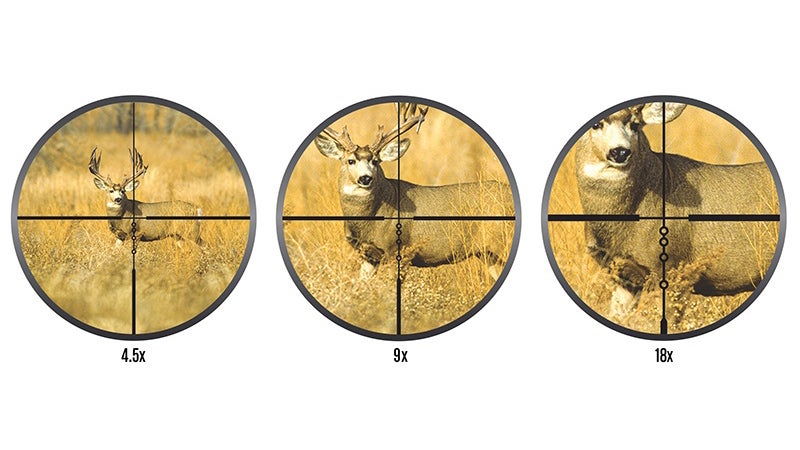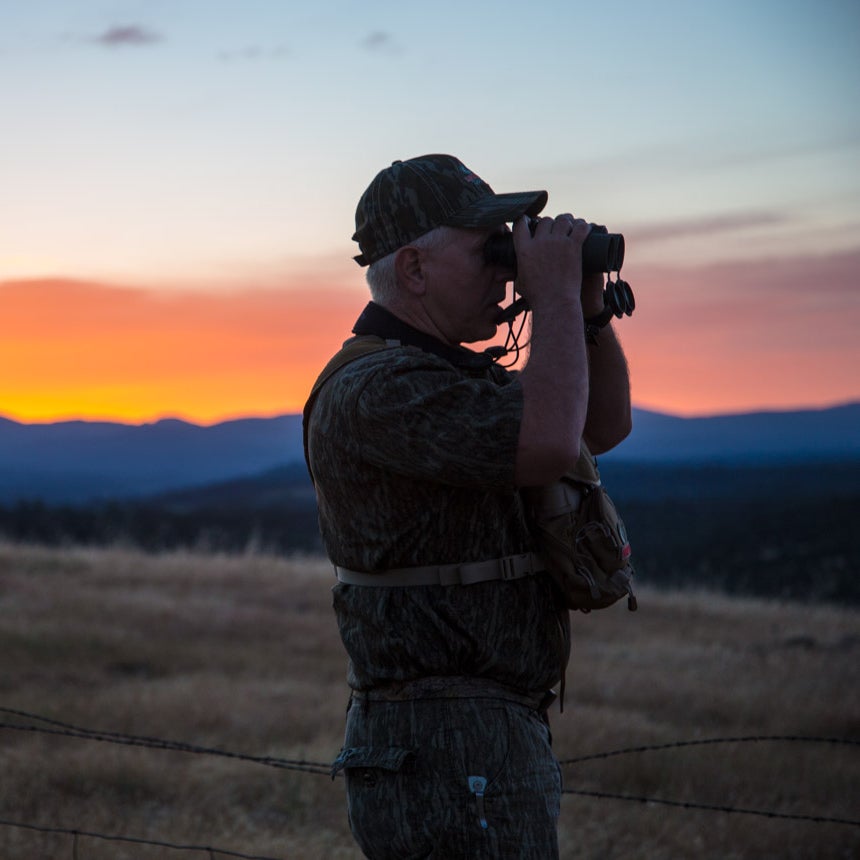Hunting season is here. And, boy, are you going to use a lot of gear on the way to filling your freezer. Let’s go over the essentials and find the best options at both high and budget price points.
Clothing
You don’t need camo to go hunting. Your existing outdoor gear should work just fine. Animals rely largely on detecting motion to spot you, so as long as you’re good about sitting still, it doesn’t really matter what colors or patterns you wear.
That said, most of the animals you want to hunt have a very good sense of smell. They may also be able to see the UV brighteners contained in most commercial laundry detergents. For that reason, it’s a good idea to develop a routine around cleaning yourself and your clothing and protecting yourself and your stuff from odors as you travel to and from wherever you’re hunting.
If I’m not camping, I’ll shower with as the last thing I do before leaving the house in the early morning. Then, depending on how scent-crazy whatever animal I’m hunting is, I may even transport my freshly washed clothes to the trailhead in an airtight bag and change once I park my truck. When possible, I wash all my hunting clothes in every night. I also spray items that are harder to wash, like my boots, with as I leave the truck.
Having said you don’t need camo, I will contend that hunting-specific clothing has advanced by leaps and bounds in recent years. It may now offer the most functional option for remaining comfortable outdoors in variable weather. offers several lines tailored to specific hunts. Its waterfowl gear, for instance, employs the latest synthetic insulation that’s designed to shed water and insulate even when wet. And all the brand’s stuff is cleverly spec’d to provide convenient features, and individual pieces are designed to work together as part of clothing systems. is designed more for high-output mountain hunting and is extraordinarily lightweight yet hard-wearing. I typically wear Sitka while bird hunting or for less athletic hunts and Kuiu for going after big game in the mountains. Plus, the patterns from both companies just look cool.
Navigation and Communication
Unlike backpacking or mountain biking, hunting means leaving trails far behind. You’ll be bushwhacking while carrying a weapon, probably in the dark, sometimes in inclement weather, and navigating the often invisible borders between private and public lands and specific hunting zones. In short, hunters need to know how to navigate and communicate in the backcountry.
For navigation, the absolute best option is probably also the cheapest. will provide you with all the data points you need, even offline, for $15 per month. The app works on your smartphone and doesn’t require you to purchase, carry, or learn to use a separate device. OnX is so good, in fact, that it’s become my go-to offline navigation app year-round for any activity.
While hunting with friends, communication is best handled by a combination of careful planning and radios. Radios are simple, cheap, and foolproof; you can hand one to someone you’ve never hunted with before, tell them what channel you’re on, and reliably expect them to be able to maintain communication. The same cannot be said about more expensive satellite communicators. But radios can be noisy. My best advice is to employ them only if your plans need to change or if there’s an emergency.
As with any activity, I’m careful to leave details about where I’m going and when I’ll be back with a reliable friend when I hunt alone. I also leave one of my radios with that person in case they need to come find me. Midland makes affordable, reliable , as well as a compatible, that you can easily hook up to your truck or ATV for extended range.

Optics
You’ll need to find and identify animals, determine their range, and depend on your ability to make a good shot. You’ll also need to carry gear that lets you do all those things, even in low light. Quality optics are key to hunting success.
At a minimum, you’ll need a good set of binoculars. A set with is a good all-round option that will be functional, bright, and reasonably easy to carry. The first number is the level of magnification, while the second is the size of the objective lens—the bigger the objective lens, the more light it lets in. instead of a neck strap so your binoculars don’t bounce around and are protected from damage.
You also want a , which instantly gives you an accurate, precise range to your target and corrects that range for angle. Knowing the correct range is crucial for making an accurate shot whether you’re using a rifle or bow—and accuracy is essential for taking an ethical shot at a living creature. give you one less thing to carry but aren’t as quick to use. Particularly for bow hunting, you may want to roll with a much faster, much smaller standalone rangefinder.
And then you’ll need to aim. I won’t discuss bow sights here—there’s just too much to explain briefly—but rifle scopes combine the magnification and light-amplifying capabilities of binoculars with the ability to quickly line up shots at varying ranges while compensating for real-world wind conditions. If that sounds like a lot to handle for one metal tube with a couple pieces of glass stuck in it, that’s because it is. Scopes are expensive; the typical advice is to spend as much or more on your scope as you do on your rifle. Your glass is probably a more important part of the accuracy equation than your rifle.
For the past year, I’ve mostly been employing to handle all of the above. Nikon offers solid midlevel products for far less than the European competition while very nearly equaling the quality and offering clever features that make them extraordinarily easy to use.
, for instance, feature digital image stabilization that removes your shakes and shudders and allows you to get a more precise range number. Trying to shoot a millisecond-long laser blast at an animal through brush can result in an inaccurate reading if you accidentally bounce that laser off a leaf or branch rather than the animal. Stabilization massively reduces that possibility.
I’m also a huge fan of the reticle inside my . Combined with Nikon’s shooting app, it allows me to easily compensate for distance and windage, even if I change bullet weights. It also offers a first focal plane reticle at reasonably low price, which means those different range numbers remain consistent as I zoom through the generous four to 16 magnification range.
Rifles
We’ve discussed it at length before, but there remains no better bargain in the hunting rifle space than the . It’s available in a huge range of calibers (mine is a 6.5 Creedmoor), incredibly lightweight at just 6.6 pounds, and sub-MOA accurate. It’s widely available for about $400 and this year has begun shipping with a detachable box magazine. The crisp, two-stage trigger is also adjustable, which combines with all the other features to make this thing a pleasure to shoot. The Monarch 3 is an ideal pairing.
But 6.5 is a bit small for some of the animals I’ll be encountering this fall, since I just moved to Montana. So, for this hunting season, I’ve just picked up a in .300 Winchester Magnum. It shoots larger, heavier bullets but retains a similarly flat trajectory, making it an even better option for longer shots. At $1,995, the Ridgeline is much more expensive than the Ruger but adds features like a carbon-fiber barrel, carbon stock, and fluted bolt that help create an all-up weight of just 6.8 pounds—extraordinarily good for a long-action rifle. It’s being FFL’d right now, and once it’s home I’m going to install a on top of it. That combines an FFP reticle with a generous 2.5 to 15 magnification range, very nice made-in-Japan quality, and an all-up weight of just 1.5 pounds.
Bows
Need more challenge? Bows require you to stalk much closer to an animal and take a much more difficult shot, but they also give you access to longer hunting seasons with more generous locations. For instance, my statewide archery antelope tag in Montana gives me a season that started on Wednesday and runs until November 11, while my rifle mule deer tag allows me to hunt only a small swath of the Absaroka-Beartooth Wilderness during a season that’s just five weeks long.
It’s too late for you to learn archery for this hunting season, but this is the perfect time to start learning for next year. I detailed the ins and outs of teaching yourself to shoot a bow .
I shoot a , which combines a very good 350-feet-per-second IBO speed with a smooth, friendly draw cycle. So friendly, in fact, that I was able to shoot it through a dislocated right shoulder last year, albeit at reduced poundage. This year, turned back up to 70 pounds, it’s delivering my tightest groups ever.
The key to archery is practice. A setup behind my garage gives me a convenient place to shoot at 20 yards for ten or 15 minutes every day. When I have time, a allows me to sight in, or practice at longer ranges, out in the woods.
Processing and Cooking
To get your meat out of the field and into your kitchen, you’ll need several sharp knives, some meat bags to keep the flies off, a good pack, and plenty of gym time. Once you’re home, you’ll need to cleanly process the animal into edible hunks of meat then store it. I still use and recommend this Kuiu pack for meat hauling.
Butchering is easier than you think, and doing it yourself means you’ve controlled the entire process of taking meat out of the woods and putting it on a plate at a dinner party. The satisfaction in doing that is immense. I wrote about . Start there.
In the kitchen, there’s not much you can’t do with a cast-iron pan and a meat thermometer. Game meat is far leaner than the stuff you buy in a store, so you’ll cook it for less time and at lower temperatures. Never cook game meat beyond medium rare (with the exception of bear), and remember that meat continues to cook for a few minutes after it comes out of the oven. I like to use a so I can keep the display outside the oven and program an alarm for five degrees below my target.
If you want to grill or smoke your animals, then I recommend doing that on a Traeger. They burn wood pellets (meaning you won’t pollute your meat with the flavor of gas) yet are easy to use and guarantee results that don’t always come with charcoal. My allows me to track and adjust long cooks from my phone, so I’m not tied to the grill for the entire afternoon before a dinner party.
In the end, serving people an animal that you’ve treated with care and expertise—and blowing their minds with how much better it is than anything they’ve ever had in a restaurant—makes spending the thousands of dollars detailed above feel worthwhile.


